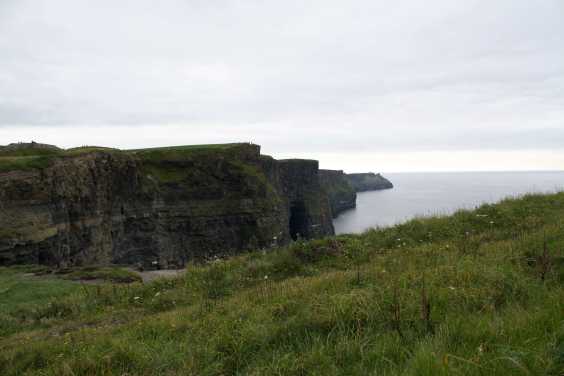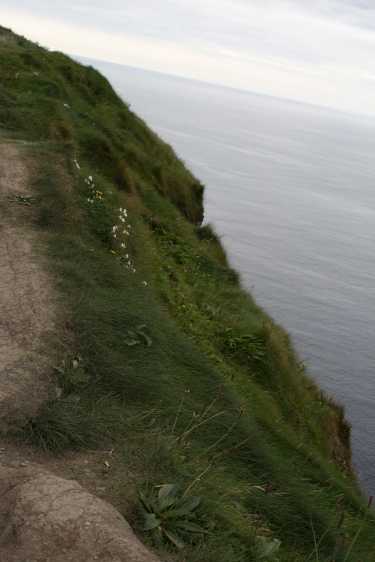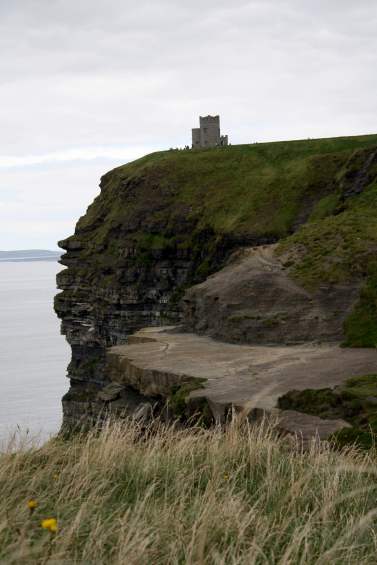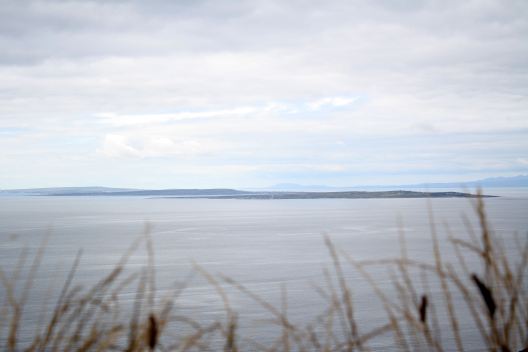The Cliffs of Moher are probably one of Ireland’s most iconic sites and a true natural wonder. With evidence of human activity stretching back at least two thousand years and the recognizable backdrop appearing in films such as The Princess Bride and Harry Potter and the Half Blood Prince, it’s easy to see why this landmark’s a must see for anyone exploring Ireland’s County Clare.

North branch of the Cliffs, August 2011.
At their highest point, the Cliffs reach 214 meters (702 feet) before plunging straight down to the Atlantic Ocean. But as one would expect from a signature point along the Wild Atlantic Way, the Cliffs are in a constant state of change – constant waves erode the mix of sandstone, siltstone, and shale at the Cliff’s base, causing higher levels to crumble and fall away. For this reason, the very edge of the Cliffs is considered a protected area, and stone barriers have been erected to help prevent visitors from venturing too close to the edge.
The Cliffs are also home to mainland Ireland’s largest seabird colony, attracting thousands of pairs of breeding seabirds representing more than 20 species during the summer months. Many of the seabirds have declining populations worldwide, further prompting sections of the Cliffs to be designated a protected area. A worn footpath does extend past the barriers into this protective area, and visitors can cross over the barrier to reach it with little difficulty, but doing so is generally discouraged for both safety and conservation reason.

The Cliff’s edge. The dirt path on the left side of the shot is what we were walking on once past the barrier.
On the southern branch of the Cliffs, O’Brien’s Tower serves as a viewing platform. Built in 1835 by Cornelius O’Brien in the hopes of bringing tourism to the area, the tower offers one of the best views of the Cliff’s northern branch, and on clear days, allows visitors to see as far as Connemara to the north and county Kerry to the south.
Hag’s Head, the Cliff’s southernmost point, is also visible from the tower, as is Moher Tower, built where a 1st century BC fort once stood. It’s from this fort the Cliffs get their name – “mothar” means “ruined fort” in old Irish.

View of O’Brien’s Tower from the Cliff’s Northern branch.
The hours my family spent at the Cliffs back in 2011 was definitely a highlight of our trip, even if the second half of our walk was nerve wracking for me. I’m afraid of heights and prone to moments of vertigo, so when my family followed other tourists past the walled region of the cliffs to the protected area, I was a bit uneasy.
We didn’t push too far into the protected area, mainly due to time constraints, so I can only imagine what the views would have been like from farther out. No matter how far we walked, the Cliffs stretched on and on, remaining hazy in the distance even though my telephoto lens. And looking out at the Atlantic Ocean with its strong breezes, the Aran Islands clearly visible in the fair weather… It’s a treat a landlocked midwesterner such as myself holds close to their heart, even long after the moment’s passed.

Looking out at the Aran Islands from the Cliff’s North branch.
Admission to the Cliffs of Moher and visitor center is €6 for adults, but free for those under 16. It’s an additional €2 for adults and €1 for children to visit O’Brien’s Tower on the south side of the cliff range. The site is open year round from 9:00 am onward, with hours extending to 9:00 pm during July and August.
Additional Links & Resources:
Discovering Ireland: The Cliffs of Moher
The Golden Book: Ireland, pages 80-81
